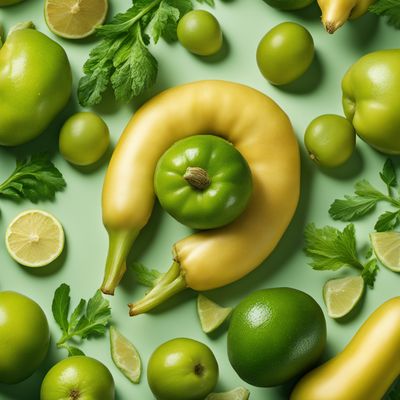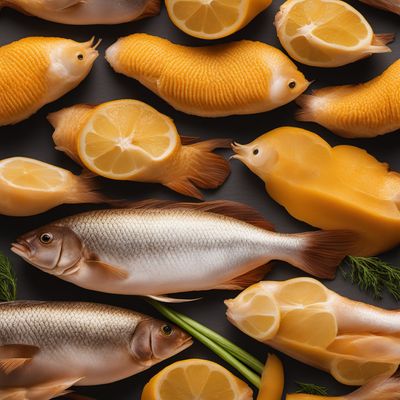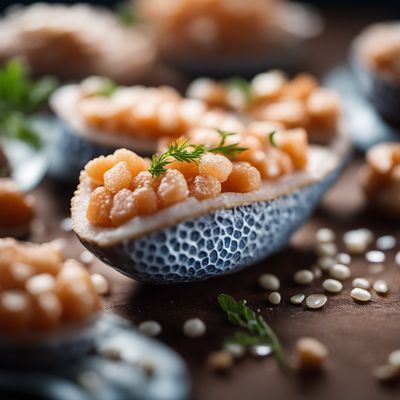
Ingredient
Dolphinfishes
The Versatile Delight
Dolphinfishes, also known as mahi-mahi or dorado, are large, brightly colored fish with a firm, lean flesh that is mild and slightly sweet in flavor. They have a moist and tender texture, making them perfect for grilling, baking, or pan-searing. Their vibrant appearance and delicate taste make them a popular choice for both home cooks and professional chefs.
Origins and history
Dolphinfishes are found in warm waters around the world, particularly in the Atlantic, Pacific, and Indian Oceans. They have a rich history in various cultures, including Hawaiian and Polynesian cuisines, where they are considered a symbol of good luck and prosperity. In ancient times, they were revered as sacred fish by the Hawaiians. Today, they are widely enjoyed for their culinary versatility and nutritional benefits.
Nutritional information
Dolphinfishes are a good source of lean protein, vitamins, and minerals. They are low in calories and fat, making them a healthy choice for those watching their weight. They are also rich in omega-3 fatty acids, which are beneficial for heart health and brain function.
Allergens
Dolphinfishes are not known to be common allergens, but individuals with fish allergies should exercise caution when consuming them.
How to select
When selecting dolphinfishes, look for firm, shiny skin with no signs of discoloration or strong fishy odor. The flesh should be translucent and moist, with no visible blemishes or bruises. If buying whole fish, the eyes should be clear and bulging, indicating freshness. Opt for sustainably sourced dolphinfishes to support responsible fishing practices.
Storage recommendations
To maintain the freshness of dolphinfishes, store them in the refrigerator at a temperature between 32°F and 38°F (0°C and 3°C). Keep them wrapped in moisture-proof paper or plastic wrap to prevent drying out. Use them within 1-2 days of purchase for the best quality and flavor.
How to produce
Dolphinfishes are typically caught in the wild, but they can also be farmed in some regions. To produce dolphinfishes, one would require access to suitable warm-water environments, such as large tanks or ponds. Adequate knowledge of fish farming techniques and regulations is essential for successful production.
Preparation tips
Dolphinfishes can be prepared in various ways, including grilling, baking, broiling, or pan-searing. They are often marinated with citrus or tropical flavors to enhance their natural taste. They can be used in tacos, salads, ceviche, or as a main course paired with vegetables or grains. When cooking dolphinfishes, be careful not to overcook them, as they can become dry and lose their delicate texture.
Culinary uses
Dolphinfishes are widely used in cuisines around the world. They are commonly featured in seafood dishes, such as fish tacos, fish burgers, fish curry, or grilled fish fillets. Their mild flavor and firm texture make them suitable for a wide range of culinary applications.
Availability
Dolphinfishes are commonly available in coastal regions and areas with access to fresh seafood markets. They are cultivated in countries like the United States, Mexico, Costa Rica, Ecuador, and Indonesia.
More ingredients from this category » Browse all

Barracudas
The Fierce Predator of the Sea

Mackerels, jack and horse mackerel, scads
The Flavorful and Nutrient-Rich Catch

Horse jack
Equine Delicacy

Cobia
The Versatile Fish: Cobia

Pompanos
The Versatile Delicacy: Pompanos

Amberjack
The Versatile Ocean Delight

Butterfish
"The Delicate Delight: Unveiling the Secrets of Butterfish"

Garfish
The Sleek and Versatile Garfish

Pomfret, atlantic
The Ocean's Delicacy: Atlantic Pomfret

Pomfret, Indo-Pacific
The Ocean's Delicacy

Bluefish
"The Bold and Flavorful Bluefish: A Seafood Delight"

Capelin
The Tiny Fish with Big Flavor: Exploring the Delights of Capelin